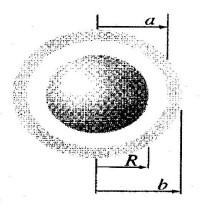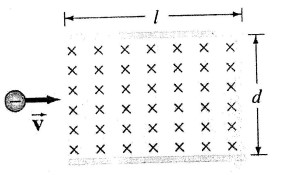PHY 102: Introduction to Physics-2
Tutorial-6
(Electric field and potential in conductors, Magnetic forces)
- Charge inside a conducting shell:} A metal sphere of radius $R$, carrying charge $q$, is surrounded by a thick concentric metal shell (inner radius $q$, outer radius $b$ as shown in Fig. 1). The shell carries no net charge,

- [(a)] Find the surface charge density $\sigma$ at $R$, at $a$, and at $b$.
- [(b)] Find the potential at the center, using infinity as reference.
- [(c)] Now the outer surface is connected to a grounding wire, which lower its potential to zero (same as at infinity). What are the answers to (a) and (b) in this case?
- Motion of a charge particle under electric and magnetic forces: A region contains an electric field $\vec{\pmb E}=7.4\hat{i}+2.8\hat{j}$ kN/C and a magnetic field $\vec{\pmb B}=15\hat{j}+36\hat{k}$ mT. Find the electromagnetic force on (a) a stationary proton, (b) an electron moving with velocity $\vec{\pmb \nu}=6.1\hat{i}$ Mm/s.
- Motion of a charged particles in a uniform magnetic field: A particle of charge $-e$ is moving with an initial velocity $\vec{\pmb\nu}$ when it enters midway between two plate where there exists a uniform magnetic field $\vec{\pmb B}$ pointing into the page, as shown in the figure 2 below. You may ignore effects of the gravitational force.\\ (a) Is the trajectory of the particle deflected upward or downward?\\ (b) What is the magnitude of the velocity of the particle if it just strikes the end of the plate?

Exclude node summary :
n
Exclude node links:
0
4727:Diamond Point
0






 ||Message]
||Message]
